Noga Zaslavsky
Culturally transmitted color categories in LLMs reflect a learning bias toward efficient compression
Sep 09, 2025Abstract:Converging evidence suggests that systems of semantic categories across human languages achieve near-optimal compression via the Information Bottleneck (IB) complexity-accuracy principle. Large language models (LLMs) are not trained for this objective, which raises the question: are LLMs capable of evolving efficient human-like semantic systems? To address this question, we focus on the domain of color as a key testbed of cognitive theories of categorization and replicate with LLMs (Gemini 2.0-flash and Llama 3.3-70B-Instruct) two influential human behavioral studies. First, we conduct an English color-naming study, showing that Gemini aligns well with the naming patterns of native English speakers and achieves a significantly high IB-efficiency score, while Llama exhibits an efficient but lower complexity system compared to English. Second, to test whether LLMs simply mimic patterns in their training data or actually exhibit a human-like inductive bias toward IB-efficiency, we simulate cultural evolution of pseudo color-naming systems in LLMs via iterated in-context language learning. We find that akin to humans, LLMs iteratively restructure initially random systems towards greater IB-efficiency and increased alignment with patterns observed across the world's languages. These findings demonstrate that LLMs are capable of evolving perceptually grounded, human-like semantic systems, driven by the same fundamental principle that governs semantic efficiency across human languages.
Human-Guided Complexity-Controlled Abstractions
Oct 27, 2023



Abstract:Neural networks often learn task-specific latent representations that fail to generalize to novel settings or tasks. Conversely, humans learn discrete representations (i.e., concepts or words) at a variety of abstraction levels (e.g., "bird" vs. "sparrow") and deploy the appropriate abstraction based on task. Inspired by this, we train neural models to generate a spectrum of discrete representations, and control the complexity of the representations (roughly, how many bits are allocated for encoding inputs) by tuning the entropy of the distribution over representations. In finetuning experiments, using only a small number of labeled examples for a new task, we show that (1) tuning the representation to a task-appropriate complexity level supports the highest finetuning performance, and (2) in a human-participant study, users were able to identify the appropriate complexity level for a downstream task using visualizations of discrete representations. Our results indicate a promising direction for rapid model finetuning by leveraging human insight.
Towards Human-Agent Communication via the Information Bottleneck Principle
Jun 30, 2022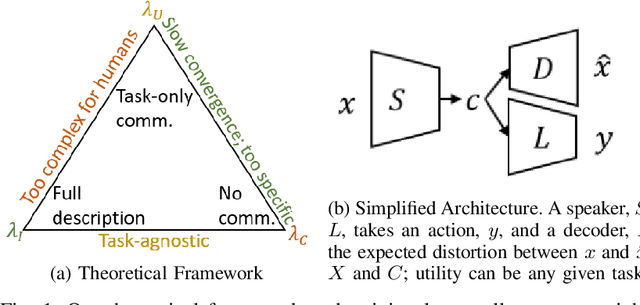

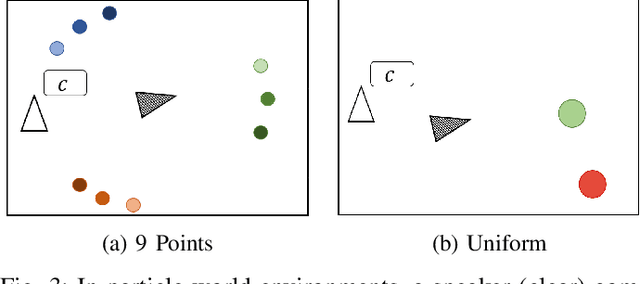

Abstract:Emergent communication research often focuses on optimizing task-specific utility as a driver for communication. However, human languages appear to evolve under pressure to efficiently compress meanings into communication signals by optimizing the Information Bottleneck tradeoff between informativeness and complexity. In this work, we study how trading off these three factors -- utility, informativeness, and complexity -- shapes emergent communication, including compared to human communication. To this end, we propose Vector-Quantized Variational Information Bottleneck (VQ-VIB), a method for training neural agents to compress inputs into discrete signals embedded in a continuous space. We train agents via VQ-VIB and compare their performance to previously proposed neural architectures in grounded environments and in a Lewis reference game. Across all neural architectures and settings, taking into account communicative informativeness benefits communication convergence rates, and penalizing communicative complexity leads to human-like lexicon sizes while maintaining high utility. Additionally, we find that VQ-VIB outperforms other discrete communication methods. This work demonstrates how fundamental principles that are believed to characterize human language evolution may inform emergent communication in artificial agents.
Scalable pragmatic communication via self-supervision
Aug 12, 2021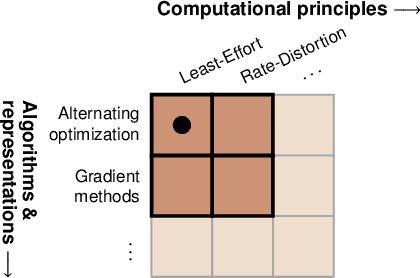
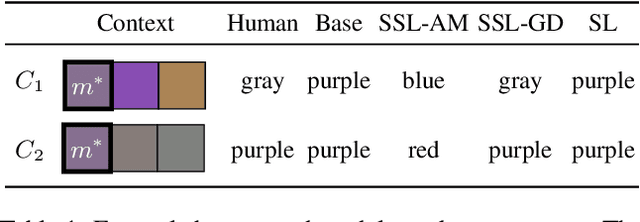

Abstract:Models of context-sensitive communication often use the Rational Speech Act framework (RSA; Frank & Goodman, 2012), which formulates listeners and speakers in a cooperative reasoning process. However, the standard RSA formulation can only be applied to small domains, and large-scale applications have relied on imitating human behavior. Here, we propose a new approach to scalable pragmatics, building upon recent theoretical results (Zaslavsky et al., 2020) that characterize pragmatic reasoning in terms of general information-theoretic principles. Specifically, we propose an architecture and learning process in which agents acquire pragmatic policies via self-supervision instead of imitating human data. This work suggests a new principled approach for equipping artificial agents with pragmatic skills via self-supervision, which is grounded both in pragmatic theory and in information theory.
Probing artificial neural networks: insights from neuroscience
Apr 16, 2021
Abstract:A major challenge in both neuroscience and machine learning is the development of useful tools for understanding complex information processing systems. One such tool is probes, i.e., supervised models that relate features of interest to activation patterns arising in biological or artificial neural networks. Neuroscience has paved the way in using such models through numerous studies conducted in recent decades. In this work, we draw insights from neuroscience to help guide probing research in machine learning. We highlight two important design choices for probes $-$ direction and expressivity $-$ and relate these choices to research goals. We argue that specific research goals play a paramount role when designing a probe and encourage future probing studies to be explicit in stating these goals.
A Rate-Distortion view of human pragmatic reasoning
May 13, 2020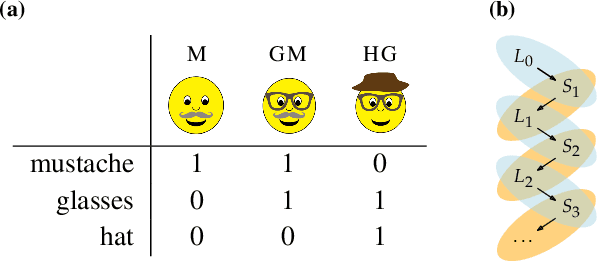
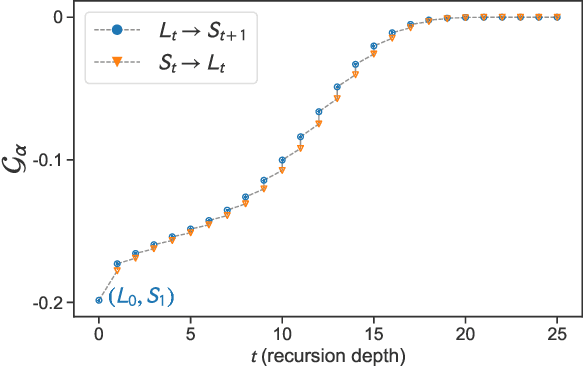

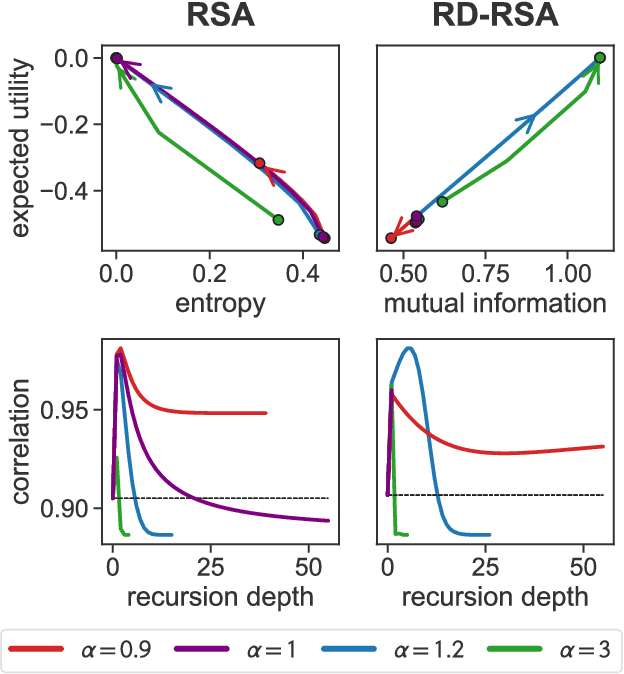
Abstract:What computational principles underlie human pragmatic reasoning? A prominent approach to pragmatics is the Rational Speech Act (RSA) framework, which formulates pragmatic reasoning as probabilistic speakers and listeners recursively reasoning about each other. While RSA enjoys broad empirical support, it is not yet clear whether the dynamics of such recursive reasoning may be governed by a general optimization principle. Here, we present a novel analysis of the RSA framework that addresses this question. First, we show that RSA recursion implements an alternating maximization for optimizing a tradeoff between expected utility and communicative effort. On that basis, we study the dynamics of RSA recursion and disconfirm the conjecture that expected utility is guaranteed to improve with recursion depth. Second, we show that RSA can be grounded in Rate-Distortion theory, while maintaining a similar ability to account for human behavior and avoiding a bias of RSA toward random utterance production. This work furthers the mathematical understanding of RSA models, and suggests that general information-theoretic principles may give rise to human pragmatic reasoning.
Semantic categories of artifacts and animals reflect efficient coding
May 11, 2019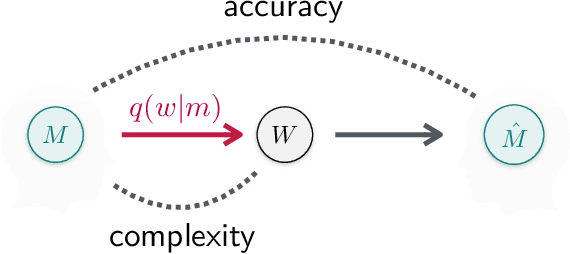
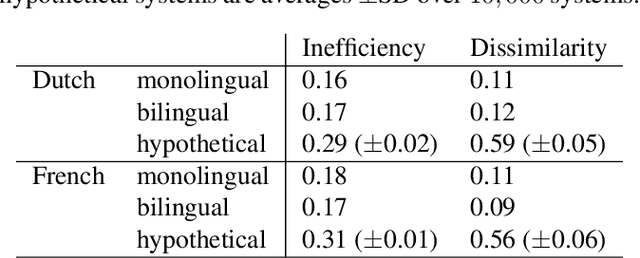
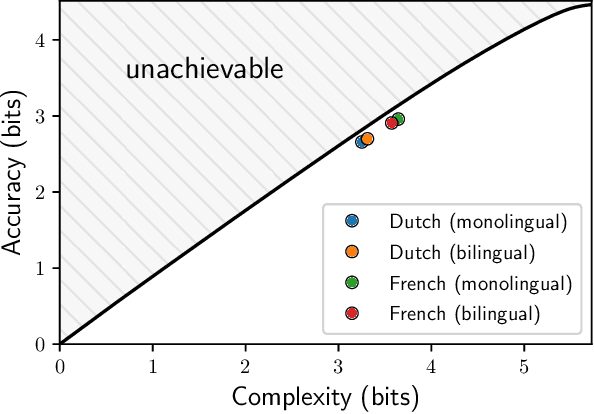
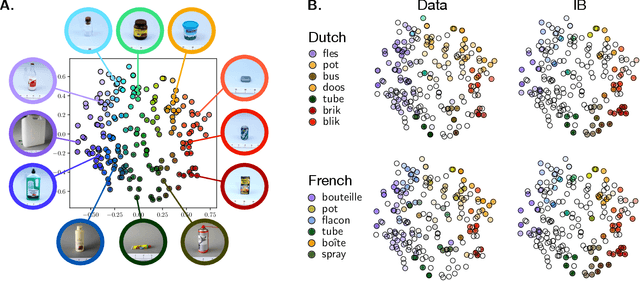
Abstract:It has been argued that semantic categories across languages reflect pressure for efficient communication. Recently, this idea has been cast in terms of a general information-theoretic principle of efficiency, the Information Bottleneck (IB) principle, and it has been shown that this principle accounts for the emergence and evolution of named color categories across languages, including soft structure and patterns of inconsistent naming. However, it is not yet clear to what extent this account generalizes to semantic domains other than color. Here we show that it generalizes to two qualitatively different semantic domains: names for containers, and for animals. First, we show that container naming in Dutch and French is near-optimal in the IB sense, and that IB broadly accounts for soft categories and inconsistent naming patterns in both languages. Second, we show that a hierarchy of animal categories derived from IB captures cross-linguistic tendencies in the growth of animal taxonomies. Taken together, these findings suggest that fundamental information-theoretic principles of efficient coding may shape semantic categories across languages and across domains.
Efficient human-like semantic representations via the Information Bottleneck principle
Aug 09, 2018
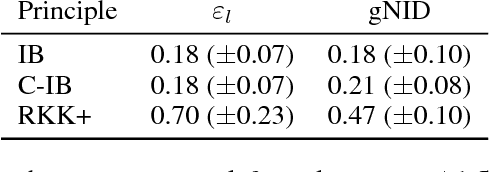
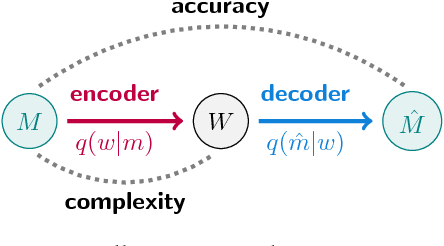
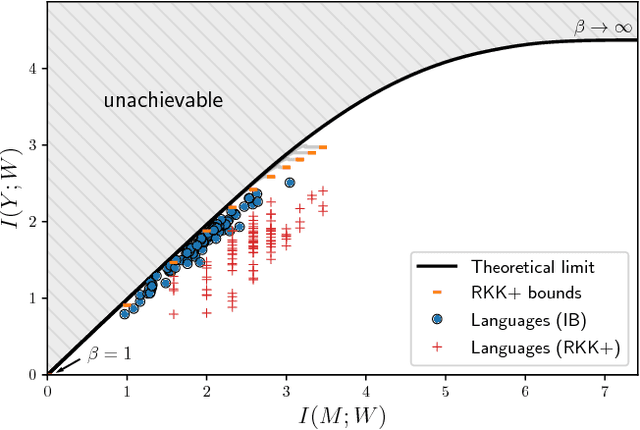
Abstract:Maintaining efficient semantic representations of the environment is a major challenge both for humans and for machines. While human languages represent useful solutions to this problem, it is not yet clear what computational principle could give rise to similar solutions in machines. In this work we propose an answer to this open question. We suggest that languages compress percepts into words by optimizing the Information Bottleneck (IB) tradeoff between the complexity and accuracy of their lexicons. We present empirical evidence that this principle may give rise to human-like semantic representations, by exploring how human languages categorize colors. We show that color naming systems across languages are near-optimal in the IB sense, and that these natural systems are similar to artificial IB color naming systems with a single tradeoff parameter controlling the cross-language variability. In addition, the IB systems evolve through a sequence of structural phase transitions, demonstrating a possible adaptation process. This work thus identifies a computational principle that characterizes human semantic systems, and that could usefully inform semantic representations in machines.
Color naming reflects both perceptual structure and communicative need
Aug 03, 2018
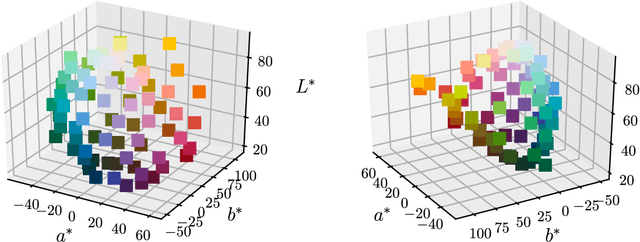
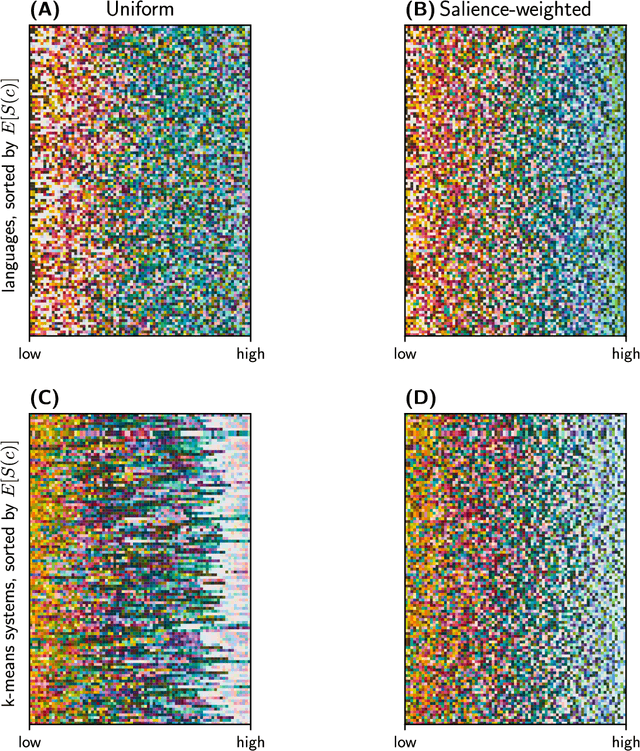
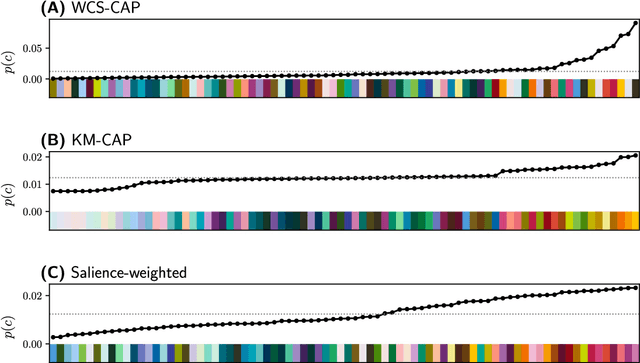
Abstract:Gibson et al. (2017) argued that color naming is shaped by patterns of communicative need. In support of this claim, they showed that color naming systems across languages support more precise communication about warm colors than cool colors, and that the objects we talk about tend to be warm-colored rather than cool-colored. Here, we present new analyses that alter this picture. We show that greater communicative precision for warm than for cool colors, and greater communicative need, may both be explained by perceptual structure. However, using an information-theoretic analysis, we also show that color naming across languages bears signs of communicative need beyond what would be predicted by perceptual structure alone. We conclude that color naming is shaped both by perceptual structure, as has traditionally been argued, and by patterns of communicative need, as argued by Gibson et al. - although for reasons other than those they advanced.
Deep Learning and the Information Bottleneck Principle
Mar 09, 2015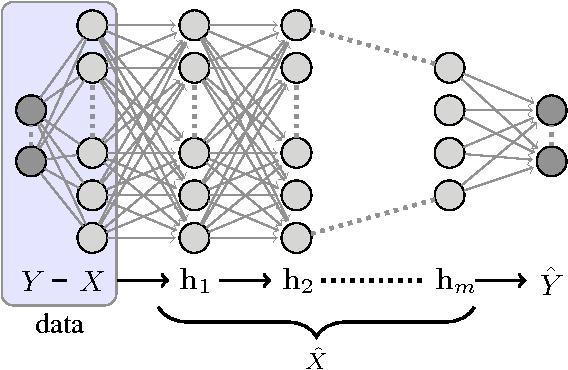
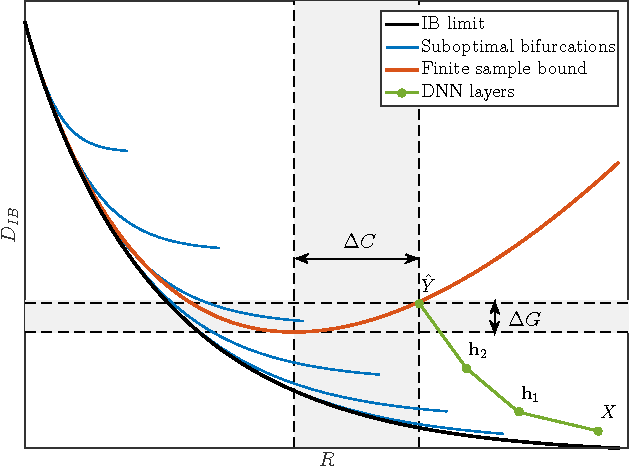
Abstract:Deep Neural Networks (DNNs) are analyzed via the theoretical framework of the information bottleneck (IB) principle. We first show that any DNN can be quantified by the mutual information between the layers and the input and output variables. Using this representation we can calculate the optimal information theoretic limits of the DNN and obtain finite sample generalization bounds. The advantage of getting closer to the theoretical limit is quantifiable both by the generalization bound and by the network's simplicity. We argue that both the optimal architecture, number of layers and features/connections at each layer, are related to the bifurcation points of the information bottleneck tradeoff, namely, relevant compression of the input layer with respect to the output layer. The hierarchical representations at the layered network naturally correspond to the structural phase transitions along the information curve. We believe that this new insight can lead to new optimality bounds and deep learning algorithms.
 Add to Chrome
Add to Chrome Add to Firefox
Add to Firefox Add to Edge
Add to Edge